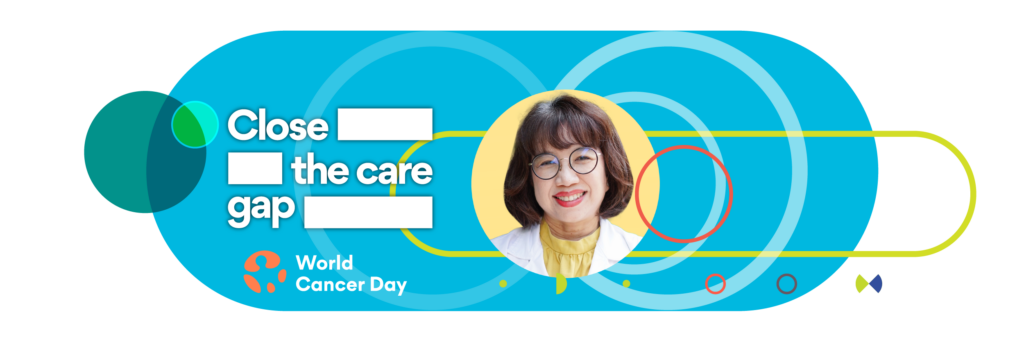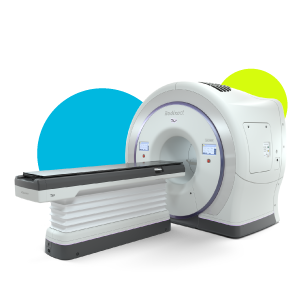Asia and the Pacific region are home to 60% of the world’s population – some 4.3 billion people[1]. There are estimated to be over 25 thousand islands, containing some of the smallest populations on the planet[1,2]. Whilst some countries are better resourced, there are still many classed as developing with limited financial resources[3], leading to disparities in radiotherapy.
Over 60% of cancer patients need radiotherapy alone or in combination with surgery and/or chemotherapy, and therefore, radiotherapy is the main and essential modality of cancer treatment.
Meeting the demand for radiotherapy services
From these statistics, it may come as no surprise that the Asia-Pacific region has a higher cancer burden than any other region. Unfortunately, in low-income countries (LICs) cancer patients often seek treatment when they are at an advanced stage of disease due to lack of education, prevention and screening. It is these patients who benefit from radiotherapy over other treatment techniques to reduce pain and help control disease for a better quality of life.
In a recent analysis, it was found that the region has only 43.9% of megavoltage machines needed to meet radiotherapy demand. This ranges from 9.9-40.5% in low- middle- income countries (LMICs) compared with 67.9% in high income countries (HICs). To put it in another way, in parts of South East Asia the number of radiotherapy machines per million population is as low as 0.1. Where in more developed countries like the US there are 11.7 radiotherapy machines per million population. This means that some countries in the Asia-Pacific region, do not have enough radiotherapy centres to meet patient demand[4].
A study from 2022 found that the total linear accelerators required to meet patient demand in 21 countries in the region was 11,039. However, currently there are only 4924, a shortfall of 6115 (55.4%)[5].
Cancer places its heaviest burden on low- and middle-income countries, where over 70% of cancer deaths are expected to occur, yet these countries receive only 5% of global spending in this area[6]. Concerted efforts to expand resources for underserved populations are crucial to providing millions access to quality cancer interventions. The goal of the Federation of Asian Radiation Oncology (FARO) is to help combat this by growing radiation oncology in all aspects to improve the level of radiation therapy across Asia.
What is FARO?
To address the knowledge and resource needs of the Asian region, a ground-breaking collaboration was forged. In November 2014 National Radiation Oncology Societies from 11 Asian countries came together. These included the Indonesian Radiation Oncology Society (IROS), the Japanese Society for Radiation Oncology (JASTRO), Association of Radiation Oncologists of India (AROI), Malaysian Oncological Society (MOS), Philippine Radiation Oncology Society (PROS), Singapore Radiological Society (SRS), Sri Lanka College of Oncologists (SLCO), Thai Association of Radiation Oncology (THASTRO), the Korean Society for Radiation Oncology (KOSRO), Chinese Society of Therapeutic Radiation Oncology (CSTRO) and the Bangladesh Society of Radiation Oncologists (BSRO). They came together to form the Federation of Asian Organizations for Radiation Oncology (FARO).
It aims to enable resource-constrained centres to ‘level-up’ to meet the needs of their patients. With a mission to provide a platform to promote education and training, scientific exchange and research in radiation oncology. Enabling continuous cooperation and communication amongst member countries[3]. As of 2024, FARO has 14 official members organizations. This includes the addition of Pakistan Society for Clinical Oncology (PSCO), Myanmar Society for Radiation Oncology (MSTRO), and Mongolian Society for Radiation Oncology (MOSTRO)
We interviewed Dr Imjai Chitapanarux, Professor in Radiotherapy Oncology at the Faculty of Medicine, Chiang Mai University, Thailand and President of FARO, on the biggest challenges in access to cancer care in the Asia-Pacific Region.
Intersectional disparities within Asian nations contribute to the complexities of the cancer care gap. There is no ‘biggest gap’, unfortunately, it encompasses every aspect from diagnosis to treatment, including public awareness and education. In particular, the population is vast which contributes to the disparities as each nation is very different. And again, the gaps vary in all aspects of cancer care, depending on the income status of these countries.

What is the status of public awareness and screening in this region?
Education and public awareness depend on the economic status of each country. Public awareness is very good in MIC-HIC, and even in some LMICs. Public awareness and screening have improved but for many LICs these services remain very limited. Gaps are especially found in rural areas compared to urban/semi-urban areas in each nation. But, this is not just to do with distance. Nowadays it is much easier to spread public awareness by using online technology. However, in some LICs online infrastructure is not yet available, and this can cause problems. Despite this, public awareness remains an easier challenge to combat than improving cancer screening.
From the patient's perspective, what do you see as the biggest barriers to closing cancer gaps?
From the patient’s perspective – affordability is the biggest barrier. Five to six years ago some countries in Asia, could not afford to provide patients with any paid-for cancer care. Therefore it had to be paid out of the patient’s pocket. Patients who can afford it can have screening and treatment. But for those that cannot afford it and the government is unable to contribute, it becomes impossible for these patients to have any cancer treatment.
What about geographic distance?
Access to care in rural areas in very important. People in urban or semi urban areas can easily access treatment like chemotherapy, radiotherapy and immunotherapy etc. However, this would be difficult for people in very rural areas. Hypofractionation – is a way to help solve some problems in access to radiotherapy. This is because it reduces the number of times a patient has to visit the hospital and increases resources for more patients too.
“Hypofractionation – a way to help solve some of the problems in access to radiotherapy”
From a healthcare provider's perspective what challenges are there in providing advanced radiotherapy services?
But for some cancer centres in this region, only 3D-conformal radiotherapy or IMRT is available. This means not all centres can perform SRS and SABR. In LIC they may only have 1 radiotherapy centre – making it extremely difficult to install advanced treatment technology that would serve millions of people. Some countries in South-East Asia have universal health coverage (UHC), where the government ensures people get the quality health services they need, without experiencing financial hardship.
UHC has two dimensions – access to needed health care, and financial protection. The Regional average for the UHC essential health services index is 61% in 2019 compared with 46% in 2010. On the other hand, over 65 million people are pushed into poverty because of health expenditure[8].
But, there is not one barrier for healthcare providers. There is also significant shortages of radiation oncologists and medical physicists. As an example the International Atomic E Association (IAEA) mandated one medical physicist per 400 patients annually. But in a study from 2022 it was found there was a shortfall of 43%. Education is also key to ensure availability of qualified staff. In a white paper from Abdel-Wahab et al it is said that trained professionals are key for the sustainable growth of radiotherapy and should be a strategic consideration in any National Cancer Control Plan[8].
Which of these barriers is easiest/hardest to address?
The easiest barrier to address is training – but the hardest to address are staff shortages, financing, and increasing UHC. To improve the reach of UHC in more countries, collaboration is vital with policy makers.
Thailand is a MIC-HIC and has had UHC for nearly 20 years. It focuses on cancer care – ensuring that radiotherapy is free of charge for patients that require it in public hospitals. In public hospitals the government pay for new facilities and the radiotherapy machines – but changes to UHC now allow patients access to treatment in private hospitals too. This improves access to care as it allows patients who are closer to private hospitals to receive treatments there instead of travelling to the nearest public hospital. The government then reimburse the private hospitals for the treatment the patient received at a set cost. This means in Thailand there is a radiotherapy centre available every 100-200 km improving health care coverage.
Where have you seen the most promising progress?
In Thailand the progress has accelerated over the last 10 years. New radiotherapy technology and the number of radiotherapy centers have increased dramatically. The number of healthcare professionals are gradually increasing – and the knowledge in our country is good. In South-East Asia, progression in education for medical physicists, radiation therapists, and radiation oncologists is being made with free monthly FARO webinars. This helps provide healthcare professionals in hospitals with very limited resources, with good practices and standards of care to deliver radiation therapy treatments more safely.
There is still some resistance from radiation oncologists to change to hypofractionation. But it is important to educate health professionals on the benefits of hypofractionation. In Thailand hypofractionation is a standard of care for breast cancer and we are now expanding this to prostate cancer, and early-stage lung cancer. It can take a long time to change practice, but we must persist.
To learn more about gaps in cancer care, read our Radiotherapy UK blog
References:
- UNFPA Asia and the Pacific Population Trend (2024)
- Diversity Inc (2020) Defining Asia and the Pacific Islands.
- Regional collaboration to improve quality of radiation therapy in Asia – PubMed (nih.gov)
- https://dirac.iaea.org/Query/Map
- https://www.who.int/southeastasia/health-topics/universal-health-coverage
- Rays of Hope | IAEA
- Status of cancer treatment by radiotherapy and requirement of radiation oncology medical physicists in Asia Oceania federation of organizations for medical physics region. PubMed (nih.gov)
- Abdel-Wahab M et al. Global Radiotherapy: Current Status and Future Directions-White Paper. JCO Glob Oncol. 2021 Jun;7:827-842. doi: 10.1200/GO.21.00029. PMID: 34101482; PMCID: PMC8457786.
The views contained and expressed in this blog, are those of the author and do not necessarily reflect the views or policies of Accuray Incorporated or its subsidiaries. No official endorsement by Accuray Incorporated or any of its subsidiaries of any vendor, products or services contained in this blog is intended or should be inferred








